Welcome back to This Week in Apps, the weekly TechCrunch series that recaps the latest in mobile OS news, mobile applications and the overall app economy.
Global app spending reached $65 billion in the first half of 2022, up only slightly from the $64.4 billion during the same period in 2021, as hypergrowth fueled by the pandemic has decreased. But overall, the app economy is continuing to grow, having produced a record number of downloads and consumer spending across both the iOS and Google Play stores combined in 2021, according to the latest year-end reports. Global spending across iOS and Google Play last year was $133 billion, and consumers downloaded 143.6 billion apps.
This Week in Apps offers a way to keep up with this fast-moving industry in one place with the latest from the world of apps, including news, updates, startup fundings, mergers and acquisitions, and much more.
Do you want This Week in Apps in your inbox every Saturday? Sign up here: techcrunch.com/newsletters
Top Stories
Twitter whistleblower’s impact (or lack thereof!) on the Elon Musk lawsuit
The headlines this week were dominated by Twitter’s former head of security, Peiter “Mudge” Zatko’s, explosive whistleblower complaint.
The former Twitter employee accused the company of cybersecurity negligence that ranged from a lack of basic security controls to national security threats and foreign intelligence risks. But one more immediate question on everyone’s minds is whether or not Zatko’s statements about bots on the platform will help or hurt Elon Musk’s case.
To some, it may appear that Zatko has backed up Musk’s claims when he notes that there are millions of active accounts on the platform which Twitter is not including in its mDAU metric — a metric Twitter itself invented to count only those users it could monetize by way of advertisements. (That is, mDAUs are mostly people, not spambots.)
“These millions of non-mDAU accounts are part of the median user’s experience on the platform,” states the complaint. “And for this vast set of non-mDAU active accounts, Musk is correct: Twitter executives have little or no personal incentive to accurately ‘detect’ or measure the prevalence of spam bots,” it reads.
The complaint then goes on to say that Twitter, when asked in 2021, couldn’t identify the total number of spam bots on its platform, and couldn’t provide an accurate upper bound on that figure.
Ah ha!, right? Even Twitter doesn’t know how much spam it has!
Well, maybe that’s not the smoking gun you might think.
Musk’s legal argument is that Twitter has been misleading its users and investors about the number of bots on its platform, which the company has estimated to be less than 5%. (Because surely this all hasn’t come about because Musk overpaid for the deal and now wants out!)
However, Twitter has been reporting to the SEC that spam and bots are less than 5% of its mDAUs — a figure that’s essentially already scrubbed of bots so advertisers know how many real eyeballs they’re able to reach. What’s more, while Zatko may have a point that this sort of made-up, proprietary metric is ripe for manipulation, he also says in the complaint that Twitter execs are “incentivized to avoid counting spam bots as mDAUs.” In other words, it seems likely that Twitter’s statements to the SEC are correct when Twitter says its mDAU figures are “less than 5%” spam.
Plus, even if Twitter doesn’t know how much total spam is on the platform at any given time, that doesn’t mean it can’t figure out how much spam is in its mDAU figure — a figure Twitter has explained it calculates using private data. Twitter looks at things like IP addresses, phone numbers, geolocation, client/browser signatures and more, CEO Parag Agrawal noted in a Twitter thread. This helps it to come up with its mDAU figure, by classifying accounts that appear to belong to “real” users as such.
It’s worth noting the total spam on Twitter’s platform is always in flux — when Twitter does a big sweep for spam and bots, users have noticed their follower counts drop. However, Twitter wasn’t monetizing based on those bots nor was it reporting inflated user metrics to the SEC by including spambots in its user figures — at least, not since its invention of the mDAU in 2019.
And while it’s true that mDAUs are not a representation of the spam-filled Twitter user experience today — an experience, remember, that Musk claimed he was buying Twitter to fix! — they are an indicator of how many real people are on the site. And that’s what a new owner would want to know anyway, right?
Whether or not mDAUs represent Twitter as it truly is misses the point. Sure, mDAUs may be a non-standard metric. It might not be comparable to the metrics used by other social platforms. It may even be a bad metric! But that’s not relevant to the case. The fact is, it’s not a new metric. Twitter defined it years ago and was using mDAUs long before Musk committed to buying Twitter. It’s what Twitter reports to the SEC.
So good luck using this as proof of being lied to, Mr. Musk. Can’t wait to see how that works in court!
In other news, Twitter expands into podcasting
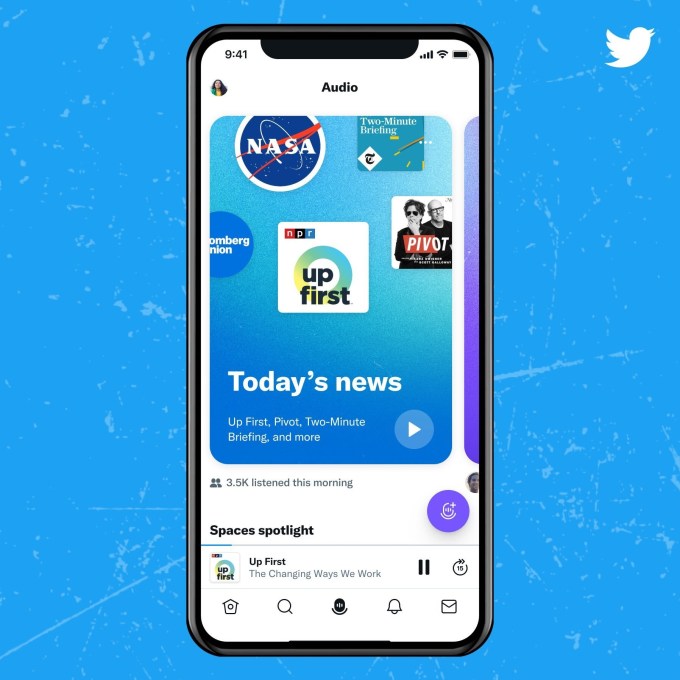
Image Credits: Twitter
While the whistleblower news may have been the biggest news story of the week, Twitter dropped some pretty significant product news as well. It’s turning itself into a podcast app.
The company announced an update to its Twitter Spaces tab that would see it integrating podcasts into a revamped experience where content is now organized into hubs called “Stations.” These Stations group content by topics — like news, sports, music and more. The app will also make recommendations based on who you follow and how you engage with content. Twitter Spaces — including both live and prerecorded audio — will also continue to be available in the Spaces tab.
TechCrunch had previously reported that Twitter was developing Stations and a personalized audio digest as part of a makeover coming to its Spaces tab, but we didn’t know the extent of the podcast integrations at the time. The company tells us it’s making over 2 million podcasts available at launch, which are programmatically recommended to users.
Podcasts are ingested as RSS feeds, which means the 2 million figure is not a hard limit — Twitter could expand. Still, it’s a notable out-of-the-gate start, as Spotify today has more than 4 million podcasts, many of which are produced in-house, exclusives or shows recorded in its Anchor app.
Twitter, of course, is home to its own sort of exclusives, known as Twitter Spaces. These live audio programs can be recorded for later listening — similar to podcasts. If the creator doesn’t download, edit and package the Space to send it out to other services on a podcast RSS feed, then these Spaces remain something you could only find on Twitter. (Of note, Twitter says it would include both the recorded Twitter Space and the resulting podcast of that Space in its app — allowing it to count the same show twice.)
Twitter will make recommendations of podcasts to individuals based on how they listen and engage with people and topics. This could also be a competitive advantage of sorts.
As to why it felt the need to do podcasts? That’s less clear. Twitter told us it wants to be “the home for audio conversations.” It also sees an overlap between podcast listeners and Twitter users. Based on its own internal research, 45% of U.S. Twitter users listen to podcasts monthly. More realistically, it likely sees the ability to monetize audio with ads — if this effort pays off.
However, Twitter falls short in terms of key features that would make its app an alternative to your favorite podcast player. There’s no offline listening, no download capability, no support for paid podcasts and no exclusive partnerships. So who, exactly, does the podcast feature serve — those so addicted to Twitter they can’t even leave the app to stream a favorite program, we suppose.
Weekly News
Platforms: Apple

- Apple announced its iPhone event will take place on September 7 at 10 AM PT. The company is expected to announce a new iPhone 14 with an improved camera and a faster chip. An updated Apple Watch may also show up along with…maybe…a AR/VR headset?!
- Apple confirmed iPadOS 16 is delayed. Bloomberg originally reported it and macOS Ventura would have a slightly later release this year.
- Apple shipped the seventh beta of iOS 16, likely a final or near-final version before the official September launch of the new OS. It also released the seventh betas for watchOS 9 and tvOS 16, as well as the first beta of iPadOS 16.1.
Platforms: Google
- Android Auto 8.0 arrived, but lacks the redesign Google teased in May that would introduce a three-section split screen layout and better adaptability with regard to supporting differently shaped car infotainment screens.
- Google launched a developer Preview of the new Cross device SDK for Android, first announced during Google I/O. The new SDK allows developers to build “rich multi-device experiences with a simple and intuitive set of APIs,” Google says.
E-commerce
- Beauty Retail and Direct-to-Consumer Apparel apps are driving more DAUs in the last 30 days than they did during the peak of 2021 holiday shopping, according to Apptopia. Daily users engaging with D2C Apparel apps have increased 5% from December 2021, and 2% for Beauty Retail apps, a report found.
- 65% of social networking app users consider Meta apps a shopping destination according to a commerce report from SimplicityDX. This data excludes Facebook Marketplace. If the marketplace is kept in the equation, the figure jumps to 83%.
- Walmart’s mobile app is getting a cashback feature — but only for Walmart+ subscribers. Via a partnership with Ibotta, Walmart+ members will be able to save offers, then scan a QR code at checkout to automatically receive money back in the in-app wallet, which they can use on a later purchase.
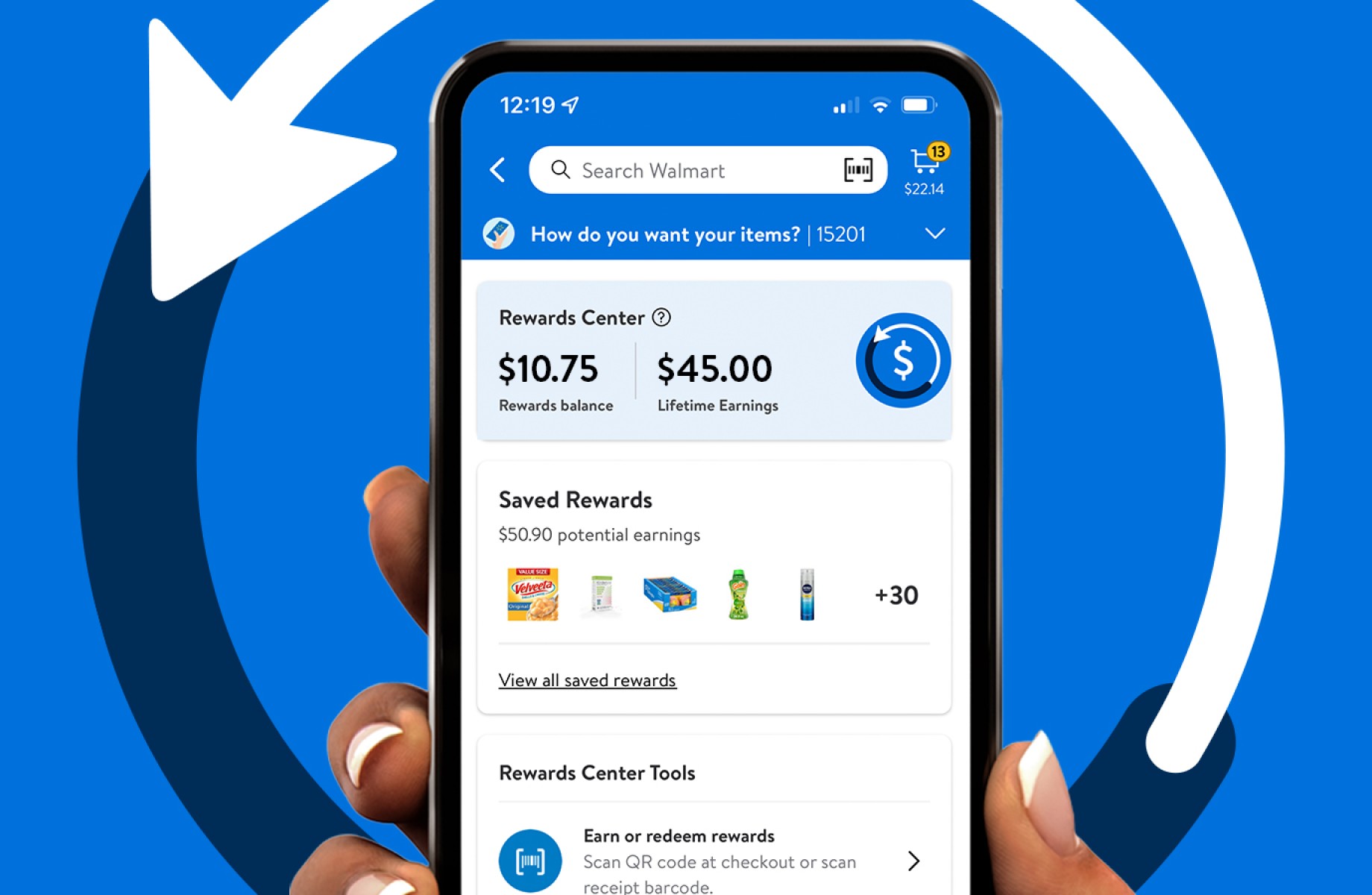
Image Credits: Walmart
Social
- Instagram updated its teen safety features, which will now default users under the age of 16 to the app’s most restrictive content setting. It will also prompt existing teen users to do the same, and will introduce a new “Settings check-up” feature that guides teens to update their safety and privacy settings. Teens under 18 can only choose between the “Standard” and “Less” options for how much sensitive content they want to see on the app. But even though new users will be defaulted to the most restrictive setting, they can still change it. The features, first announced in December before Instagram’s Senate testimony, are rolling out to global users now. Privacy advocates say they’re a good first step, but suggest that Instagram should route its youngest users to the most restrictive setting, including if it suspects they’re younger than they indicated when signing up. And they point out that Instagram’s list of what it considers sensitive content doesn’t include content that promotes self-harm or disordered eating.
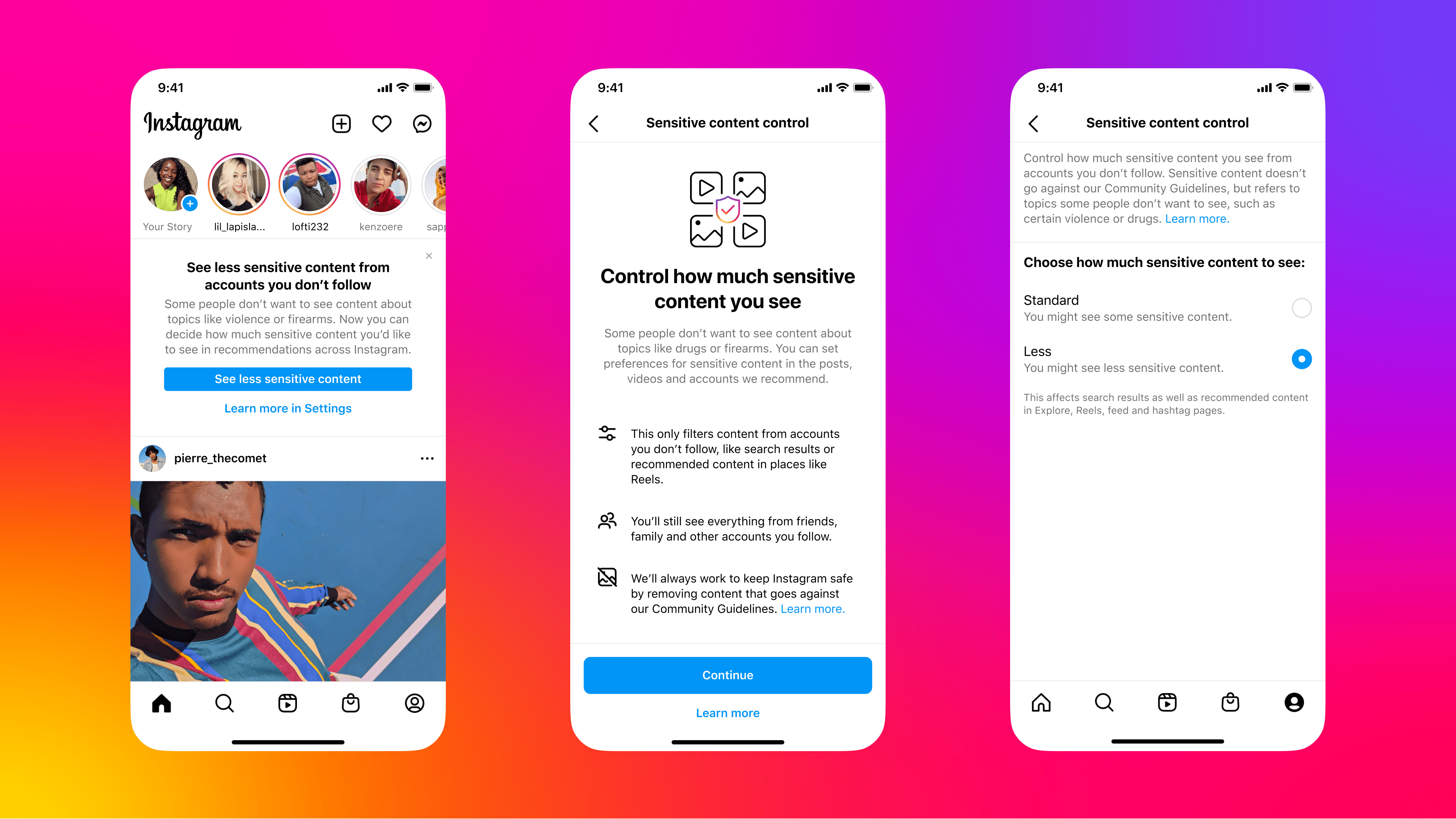
Image Credits: Instagram
- It’s not a verified label but…Twitter began tests of a special tag that would highlight accounts that had a verified phone number. This signals the account is less likely to be spam. Also this week the team working on spam bots, the Twitter service team, merged with those working to reduce toxic content, the platform health experience team.
- TikTok tries out a “Nearby” feed that displays local content to users. The test is only live in Southeast Asia and is currently limited in scope. When available, the feed is shown as a third option alongside For You and Following on the app’s homepage.
- Snap settled an Illinois class action lawsuit that accused Snapchat’s filters and lenses of violating the Biometric Information Privacy Act. The settlement totaled $35 million and will go toward individual payouts that are estimated to be between $58 and $117. Users who think they may be eligible for compensation can submit a claim online. Despite settling the claims, Snap still denies it violated the BIPA, saying its Lenses “do not collect biometric data that can be used to identify a specific person, or engage in facial identification.”
- Instagram added a feature that allows users to share anyone’s posts or Reels through a QR code. Users also can share a QR code location through its searchable Map experience.
- Pinterest confirmed it’s facing a probe by California’s Civil Rights Department over unlawful discrimination. The department reached out to former Pinterest employee Ifeoma Ozoma and others as possible witnesses, all of them women. Ozoma and another former Pinterest employee, Aerica Shimizu Banks, had accused the company around two years ago of discrimination and retaliation.
Messaging
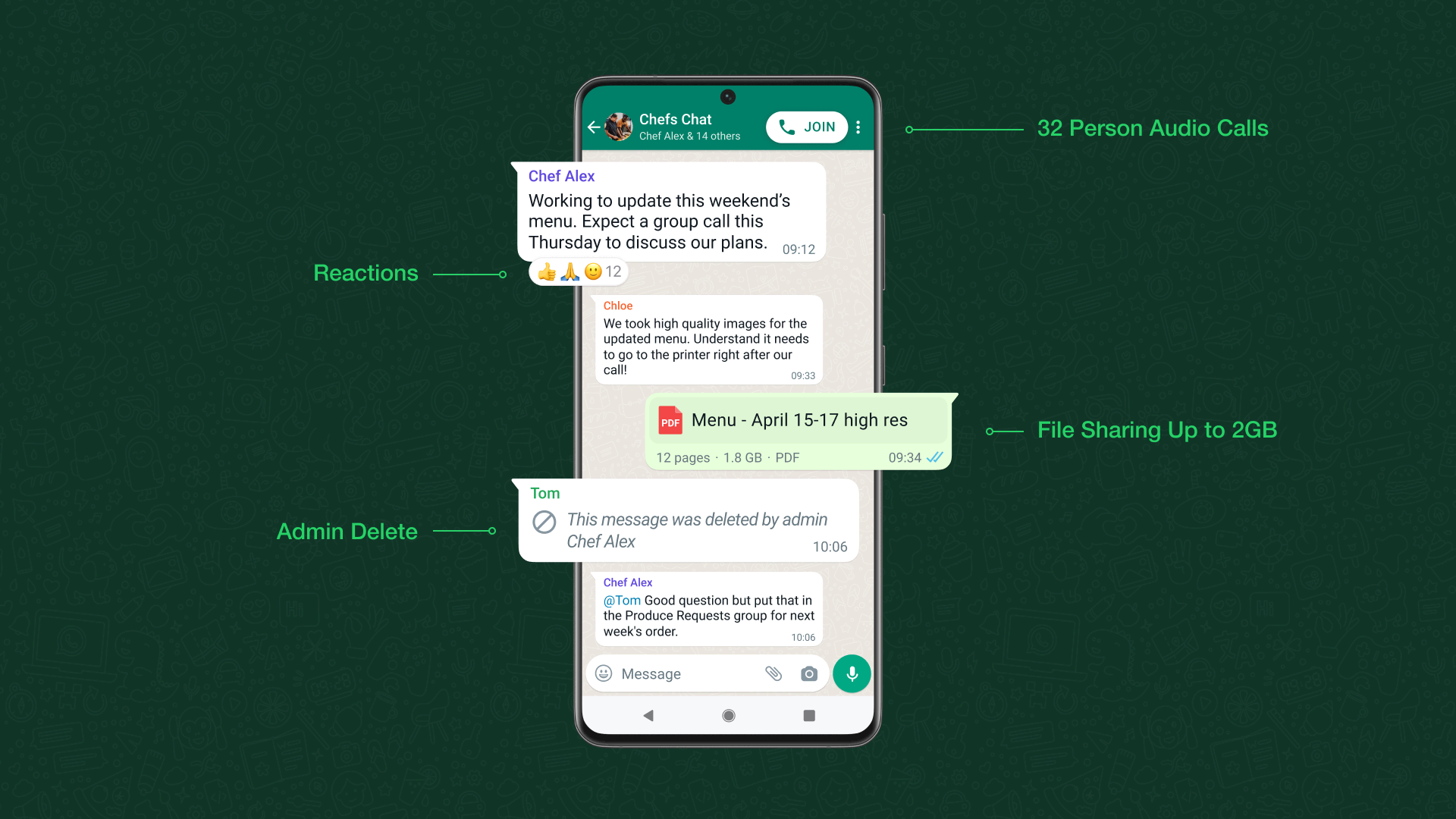
Image Credits: WhatsApp
- WhatsApp confirmed that users in select markets are gaining access to WhatsApp Communities, its new group discussions platform offers admin controls, sub-groups, file sharing, 32-person group calls and emoji reactions.
- WhatsApp is working on a feature to make Stories — or, as it’s known on the app, Status Updates — a bigger part of the experience by adding blue rings around users’ profile photos in the main chat list that link to their updates. It’s also planning to add the ability to retrieve deleted messages and let admins erase messages from group chats, reports said.
- Telegram founder Pavel Durov said he wants to integrate web3 into the messaging app, TechCrunch reported. Specifically, Durvo referenced the TON project and how it’s used for domain name/wallet auctions. He said he’d be inclined to try out TON’s blockchain on Telegram.
- Facebook Messenger received an update making it compatible with M1 and M2 Macs.
Photos
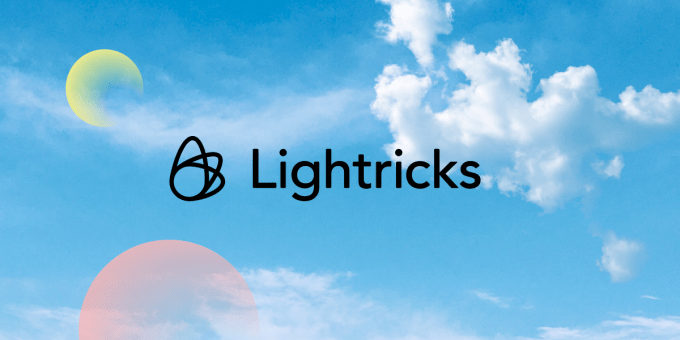
Image Credits: Lightricks
Dating
- Match Group’s COO and CFO Gary Swidler has warned that Tinder signups aren’t back at pre-pandemic levels and new user acquisition remains a challenge, per The FT.
- Tinder’s parent company Match filed a new antitrust case in India against Apple over its App Store fees, calling them excessive.
Streaming & Entertainment
- YouTube TV is developing a new viewing mode that would allow users to watch four different streams at once in a mosaic interface. It’s also said to be working on a way to bring YouTube Shorts to the TV.
- A hacker compromised Plex’s streaming media platform and was able to access usernames, emails and encrypted passwords. Plex informed users by email and suggested a password reset.
- SiriusXM began offering a bundle that combines Stitcher Premium with its SiriusXM Platinum Plan.
Gaming

Image Credits: Netflix
- Netflix launched its own version of the popular Heads Up! game to subscribers, which features decks referencing popular Netflix shows like “Bridgerton,” “Selling Sunset,” “Stranger Things,” “Squid Game” and others.
- Netflix job postings suggest the company is expanding into cloud gaming. So far, the streamer’s some two-dozen mobile games are only used by less than 1% of its subscriber base, according to third-party data.
- The New York Times integrated its popular word game app, Wordle, into its existing NYT’s Crossword app. This now allows it to rank above other Wordle clones and copycats in app store searches.
- Google launched its Google Play Games for PC program into open beta in South Korea, Hong Kong, Taiwan, Thailand and Australia. The program had only been available through a waitlist, previously. It now offers more than 50 PC-compatible games for Windows users — including Summoners War, Cookie Run: Kingdom, Last Fortress: Underground and Top War. The games can be played using the same Google ID on Windows as on users’ Android devices.
- Valve is now beta testing a redesigned Steam mobile app for iOS and Android, which includes a rebuilt framework and modernized design. The app hasn’t gotten a major revamp in years. Valve says the beta will help it learn what users like and don’t, and find bugs that need to be fixed.
Productivity
- Microsoft is introducing more ads inside its Outlook Mobile app for iOS and Android. Before, the company only included ads in the “Other” tab of the inbox — the one with all the junk — for those who use the two-tabbed mode for filtering their emails. It will now include ads in the inbox for those who use a single inbox interface, too.
Travel & Transportation
- Google’s Waze is shutting down its six-year-old service Waze Carpool starting next month. The company said driving behaviors changed following the pandemic as more people are working from home, which reduced the need for a service aimed at commuters.
Utilities
- Bloomberg doubled down on its earlier reporting of more ads coming to Apple’s first-party apps with confirmation that Apple Maps will start serving ads next year.
- Apple kicked off fundraising for U.S. National Parks through Apple Pay donations running August 21-28. As a part of this initiative, it also rolled out a new national parks guide to highlight those that honor Native American heritage inside the Apple Maps app. While these sort of initiatives may help to drive users to Apple Pay, the company may no longer need to do this in the future as now three-quarters of U.S. iPhone users have enabled Apple Pay on their devices.
- Both Yelp and Google Maps rolled out updates to make it clearer which listings were abortion providers versus crisis pregnancy centers. Yelp labeled the latter as providing “limited medical services” while Google labeled abortion care providers as “provides abortions.” It’s not taking action on crisis pregnancy centers, however.
- Google Wallet (previously known as Google Pay) rolled out to six more regions, making the app available now in 45 global markets.
- Apple’s Wallet app can be deleted in iOS 16.1, code suggests, as Apple responds to regulatory pressure focused on how it may push its first-party apps on iPhone users.
Security & Privacy
- VICE goes hands-on with Pretty Good Phone Privacy, a data service for Android that offers increased security when using mobile phone networks. They concluded the service could be suited to those who want a layer or two of additional protections but cautioned PGPP was still in early phases and a little buggy.
- Food delivery app DoorDash confirmed a data breach that exposed customers’ personal information, including names, email addresses, delivery addresses and phone numbers. A subset of users also had partial payment card information stolen.
- Twilio confirmed the same hackers compromised the accounts of some users of its 2FA app, Authy, as part of a wider breach of its systems.
- Google said it has pulled over 2,000 personal loan apps from its Play Store in India this year amid a crackdown on apps engaged in predatory lending practices and abuse and harassment of their users.
Reading Rec’s
- “How the Find My App Became an Accidental Friendship Fixture“ — The New York Times dug into how young people are using Apple’s Find My app to keep up with their friends, no matter the cost to personal privacy and interpersonal dynamics.
- “It’s a modern-day Facebook’ – how BeReal became Gen Z’s favourite app”— this hot Gen Z app is profiled by The Guardian, which dubs it the “modern-day Facebook” for keeping up with real-life friends.
- Authenticator app developer Kevin Archer detailed in a Twitter thread how he continues to face subscription scammers on the App Store who have copied his legitimate app, then beg for reviews during onboarding and push a subscription on consumers before users even start using the app. Archer says they’ve reported the scam several times using the “Report a Problem” feature and Apple has not taken action.
Funding and M&A
 Consumer social app maker 9count raised an additional $6 million on top of its $21.5 million Series A to help fund development of its flagship app, Wink, and its newer dating app, Summer.
Consumer social app maker 9count raised an additional $6 million on top of its $21.5 million Series A to help fund development of its flagship app, Wink, and its newer dating app, Summer.
 Bengaluru-based healthcare app Mojocare raised $20.6 million in Series A funding led by B Capital Group. The app offers consultations with doctors, therapists and nutritionists and sells products.
Bengaluru-based healthcare app Mojocare raised $20.6 million in Series A funding led by B Capital Group. The app offers consultations with doctors, therapists and nutritionists and sells products.
 Dubai-based Zywa, a neobank aimed at Gen Z users, raised $3 million in seed funding at over $30 million (110 million AED) valuation. The startup aims to expand further into Saudi Arabia and Egypt.
Dubai-based Zywa, a neobank aimed at Gen Z users, raised $3 million in seed funding at over $30 million (110 million AED) valuation. The startup aims to expand further into Saudi Arabia and Egypt.
 Seattle mental health Alongside raised $5.5 million for its in-development adolescent mental health app. The app would allow users to interact with a chatbot and guide them to resources.
Seattle mental health Alongside raised $5.5 million for its in-development adolescent mental health app. The app would allow users to interact with a chatbot and guide them to resources.
Downloads
Shuffles

Image Credits: Pinterest
Collage-style video “mood boards” are going viral on TikTok — and so is the app that is making them possible. Pinterest’s recently soft-launched collage-maker Shuffles has been climbing up the App Store’s Top Charts thanks to demand from Gen Z users who are leveraging the new creative expression tool to make, publish and share visual content. These “aesthetic” collages are then set to music and posted to TikTok or shared privately with friends or with the broader Shuffles community.
Despite being in invite-only status, Shuffles has already spent some time as the No. 1 Lifestyle app on the U.S. App Store.
During the week of August 15-22, 2022, Shuffles ranked No. 5 in the Top Lifestyle Apps by downloads on iPhone in the U.S., according to metrics provided by app intelligence firm data.ai — an increase of 72 places in the rankings compared to the week prior. It was the No. 1 Lifestyle app on iPhone by Sunday, August 21st, and broke into the Top 20 non-gaming apps on iOS as a whole in the U.S. that same day, after jumping up 22 ranks from the day prior.
But this app isn’t available to all. You need to know someone with an invite to get in. You can try our invite codes FTSNFUFC or L5JI8QCS to try to get in.
Read more about Shuffles here on TechCrunch.









 Consumer social app maker 9count
Consumer social app maker 9count 
